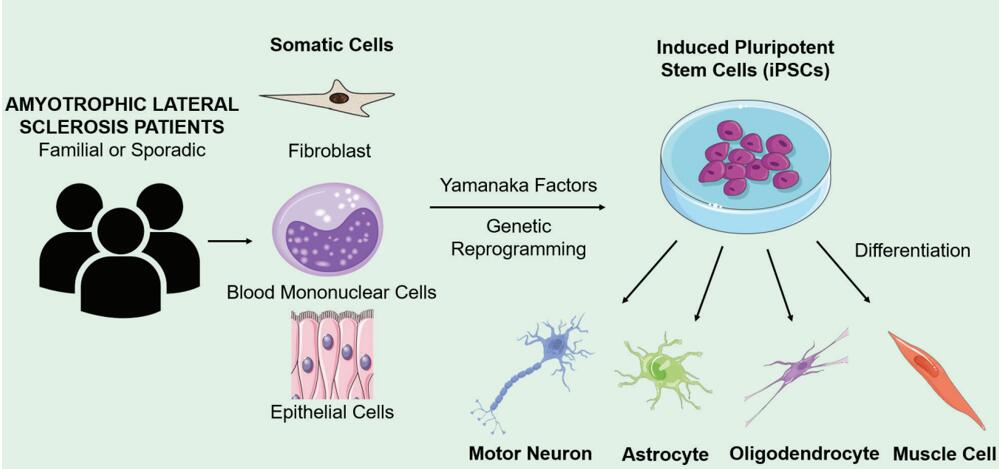iPSCs can be generated from Amyotrophic Lateral Sclerosis (ALS) patient-derived cells (e.g., skin fibroblasts) and then differentiated into motor neurons. This allows researchers to study ALS in a patient-specific genetic background.
 Figure1. iPSCs can be derived
from patient’s somatic cells and differentiated in motoneurons, glial cells and muscle fibers, to study ALS pathologic mechanisms in vitro. iPSC-derived
cell can also be used in drug screenings and possibly in future cell replacement therapies. [1]
Figure1. iPSCs can be derived
from patient’s somatic cells and differentiated in motoneurons, glial cells and muscle fibers, to study ALS pathologic mechanisms in vitro. iPSC-derived
cell can also be used in drug screenings and possibly in future cell replacement therapies. [1]
Mutations in genes like C9orf72, SOD1, and TDP43 are among the most common genetic contributors to familial ALS. Understanding the impact of these mutations on cellular function is crucial for advancing ALS research and drug development. Utilizing cellular models derived from patients carrying mutations in these genes is invaluable for ALS disease modeling.
Creative Bioarray's iPSC-derived ALS models provide a unique platform for studying ALS pathogenesis, identifying potential therapeutic targets, and screening candidate drugs.
Reference:
1. Vasques JF, Teixeira Pinheiro LC, de Jesus Gonçalves RG, et al. Cell-based Research and Therapy for Amyotrophic Lateral Sclerosis: Promises and Challenges. In: Araki T, editor. Amyotrophic Lateral Sclerosis [Internet]. Brisbane (AU): Exon Publications; 2021 Jul 25. Chapter 7. Available from: https://www.ncbi.nlm.nih.gov/books/NBK573430/ doi: 10.36255/exonpublications.amyotrophiclateralsclerosis.celltherapy.2021
Online Inquiry